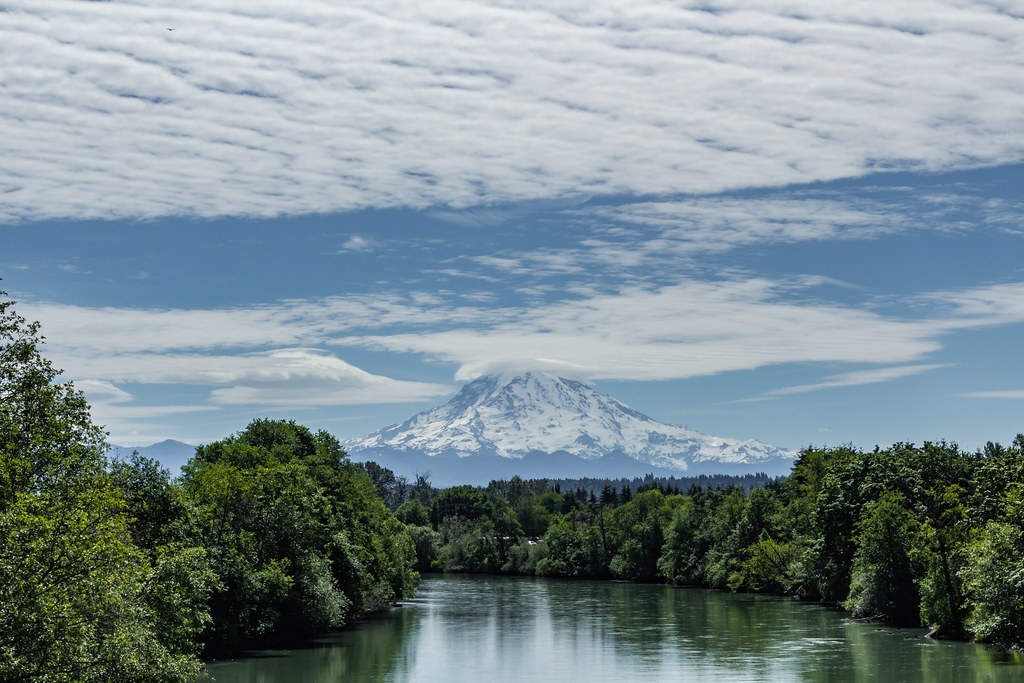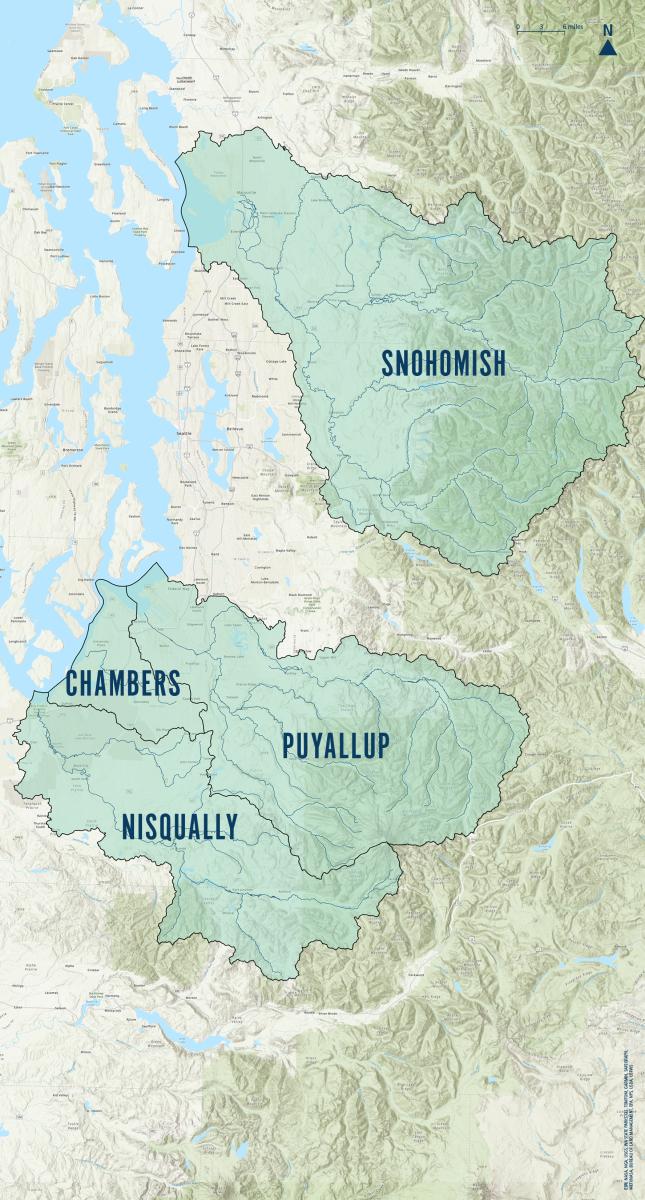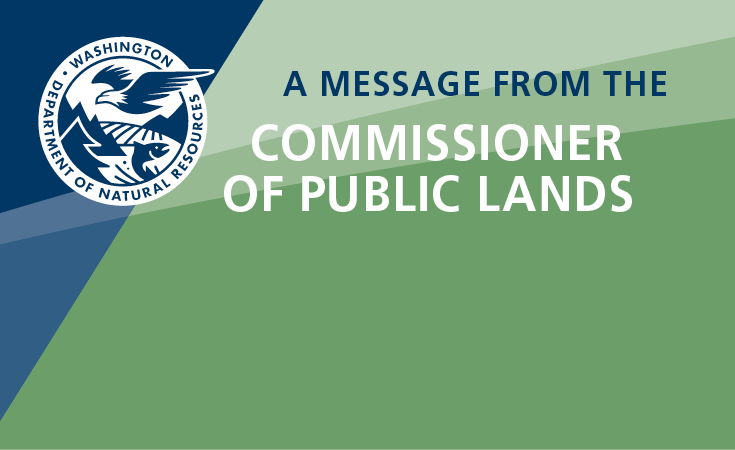Watershed Expansion

Mt. Ranier, seen here over the Puyallup River, shapes the headwaters of two of DNR’s focus watersheds: the Puyallup and Nisqually. Photo: David Seibold/Creative Commons
The Watershed Resilience Program uses watershed-scale coordination to support the Department of Natural Resource’s (DNR’s) ongoing work and accelerate the pace of salmon recovery in priority river basins. By leveraging lessons learned from early implementation of the Watershed Resilience Action Plan (WRAP) in the Snohomish Watershed, DNR seeks to apply a streamlined framework to the needs and local contexts of additional watersheds beginning with the Puyallup, Chambers and Nisqually basins.
DNR’s watershed resilience planning focuses on better coordinating existing DNR programs, finding opportunities to increase support for partners, and identifying where new DNR work could be additive to the existing salmon recovery landscape.
The Puyallup and Nisqually Watersheds were selected as the next focus river basins for the Watershed Resilience Program beginning in the 2023-2025 biennium. Selection was based on a prioritization process which considered parameters such as salmon recovery, environmental justice, and climate vulnerability. To better align with the existing salmon recovery planning network, the Chambers Watershed was also included in the Program’s focus area in 2024.
The Watershed Resilience Program is guided by the same five goals described in the WRAP:
-
Protect and clean up aquatic habitat,
-
Restore, conserve and connect forests and riparian habitat,
-
Revitalize urban forests and streams,
-
Engage and invest in communities, and
-
Reduce and combat climate impacts.

DNR's Watershed Resilience Program now includes the following watersheds: from north to south the Snohomish, Puyallup, Chambers and Nisqually. Photo: DNR
The work in the Puyallup, Chambers and Nisqually Watersheds is guided by the same five goals described in the Snohomish WRAP:
-
Protect and clean up aquatic habitat.
-
Restore, conserve and connect forests and riparian habitat,
-
Revitalize urban forests and streams,
-
Engage and invest in communities, and
-
Reduce and combat climate impacts.
In collaboration with Tribes, salmon recovery partners, and staff across the agency, Watershed Resilience Program staff seek to identify opportunities for DNR to support salmon recovery efforts in each new watershed. By generating a suite of possible projects aligned to the goals of Watershed Expansion, we develop a menu of possible DNR actions in these watersheds. A short list of high-level goals and metrics for the expansion program will be used to track implementation.
The initial phase of Program Expansion focused on program development, strategic planning, relationship building and understanding local salmon recovery priorities. Projects are now being developed with multiple partners including the Puyallup Tribe, South Puget Sound Salmon Enhancement Group, South Puget Sound Region, the Aquatic Reserves Program, the Aquatic Lands Restoration Team and the Derelict Vessel Removal Program. These projects address a range of issues from data gaps to invasive species, fish passage barriers and nearshore restoration.
Stay tuned to hear about the exciting work DNR is planning in these watersheds and to learn where we plan to go next!
To learn more about watershed expansion or share your ideas for potential projects and partnerships, please email Hannah King or Rachel Benbrook.


